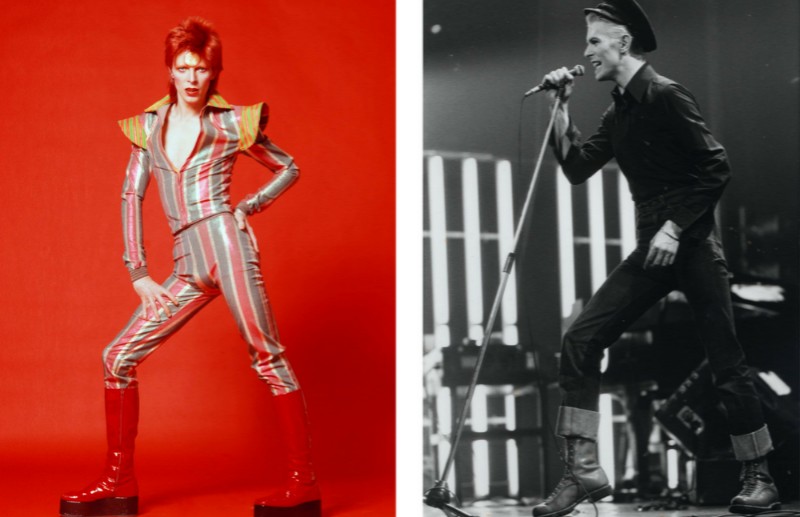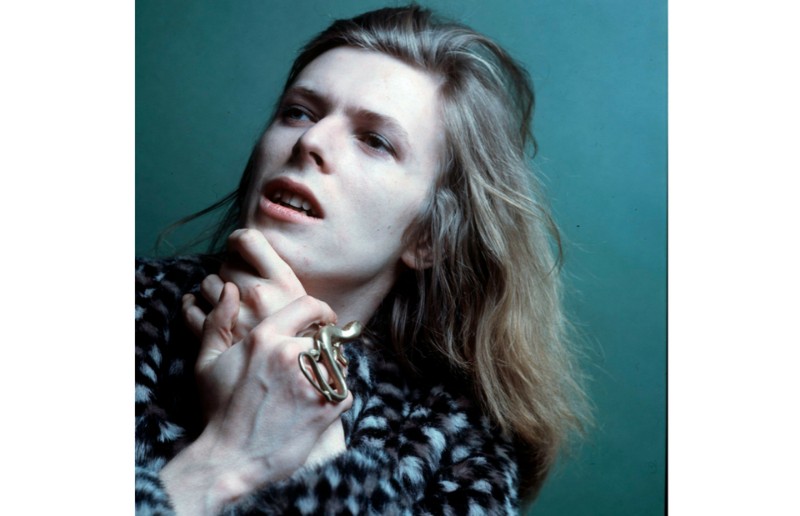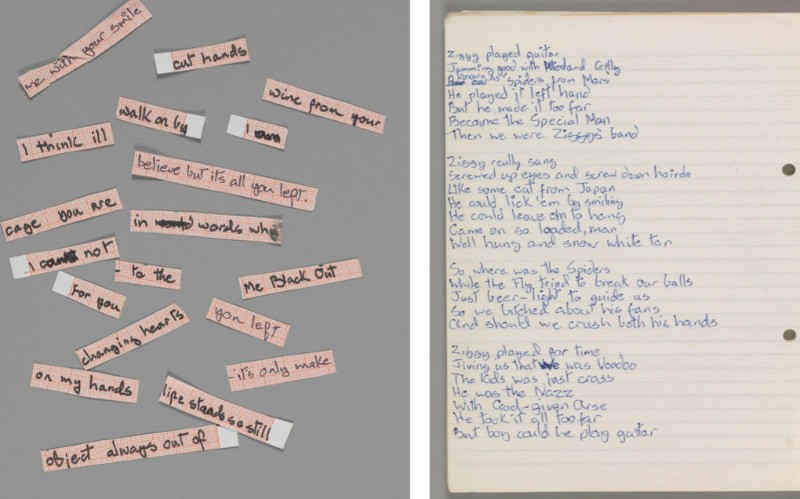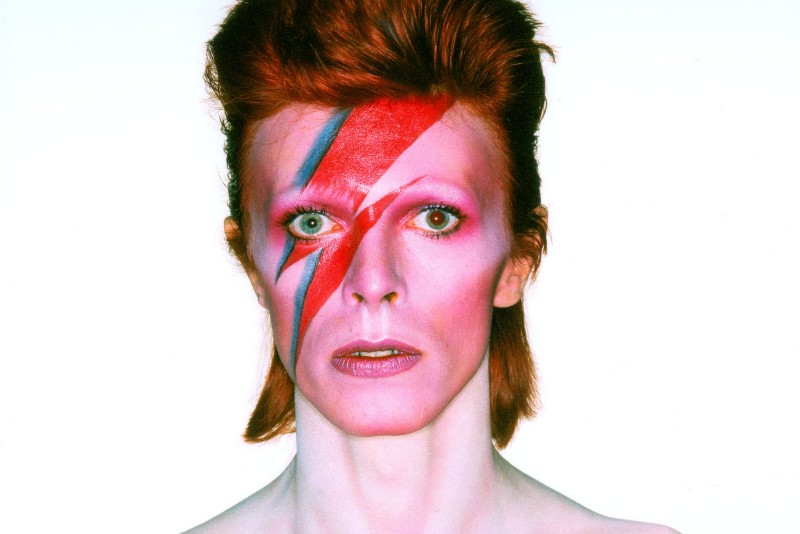David Bowie is …
– there are many ways to complete this sentence. The touring exhibition of the same name dedicated to Bowie’s artistry – his music, costumes, sketches, stage props and videos – gives plenty of possibles.

David Bowie, 1973. Photograph by Masayoshi Sukita. Copyright Sukita/The David Bowie Archive & David Bowie, 1976. Photograph by Andy Kent. Courtesy of The David Bowie Archive
All of the icon’s incarnations, inventions and influences are played out in the David Bowie is exhibition at Brooklyn Museum, one of the largest shows ever held at the New York institution. After 12 incredibly successful residencies – beginning in Bowie’s home city, London, in 2013, and spanning five continents – Brooklyn Museum is to be the exhibition’s final stop. This seems a fitting end point for this experiential showcase dedicated to the self-proclaimed New Yorker.

David Bowie, 1971. Photograph by Brian Ward. Courtesy of The David Bowie Archive
Like its muse, the exhibition (curated by London’s V&A) is experimental. 100 or so new objects, some of which have never been publicly shown, have been added to the collection on display, and an American (New York, mostly) focus has been introduced and fine-tuned by the Brooklyn Museum’s director of exhibition design, Matthew Yokobosky. One of Yokobosky’s additions, the large light-up BOWIE letters that dwarf visitors as they enter one of the first rooms were originally a backdrop in Bowie’s marathon New York tour in 2002, when he played five theatres in the city’s five boroughs in five days. It took the team two months to get the lights to work again, but they make a dazzling first impression. Start as you mean to go on, we say.

Cut up lyrics for “Blackout” from Heroes, 1977 & Original lyrics for “Ziggy Stardust,” by David Bowie, 1972. Both courtesy of The David Bowie Archive. Image © Victoria and Albert Museum
Key memorabilia that has been shown around the world remain hallmarks of the New York retrospective too. On display are more than 50 costumes (Ziggy Stardust’s clinging bodysuits appear alongside stark monochrome tailoring from the Thin White Duke days); personal effects (Bowie’s coke spoon from the ‘70s was unexpected); notebooks (all with the writer’s original sketches and designs); and over 50 video recordings (look out for the film documenting an uncomfortable exchange with Andy Warhol at the Factory circa 1971 – it’s fascinating).
The visuals – initially ordered chronologically: to encompass David’s upbringing and provide social context, then thematically: by personas and influences – are experienced alongside a soundtrack that changes depending on what part of the exhibition visitors are in. You’ll want to keep these headphones on, and turn them up loudly: this soundtrack includes an amazing mix of songs, as well as various snippets of Bowie chatting and the occasional word from other collaborators too.

Photograph from the album cover shoot for Aladdin Sane, 1973. Photo Duffy © Duffy Archive & The David Bowie Archive
The only place where headphones aren’t required is in one of the final rooms, a vast cinematic space with floor-to-ceiling video projections and stunning surround sound. Here, visitors relive Bowie’s greatest live performances. Dancing isn’t discouraged (perhaps leave singing to the shower though), however most people we noticed remained still as they took it all in; satisfied yet always wanting for the blazing, extraordinary musician that brightened, questioned, and, in so many ways, deeply altered our world.
You have just a few weeks to see ‘David Bowie is’ at the Brooklyn Museum before it closes for good (July 15!). Book your ticket (right now) and wear comfortable shoes – you’ll be staying a while.